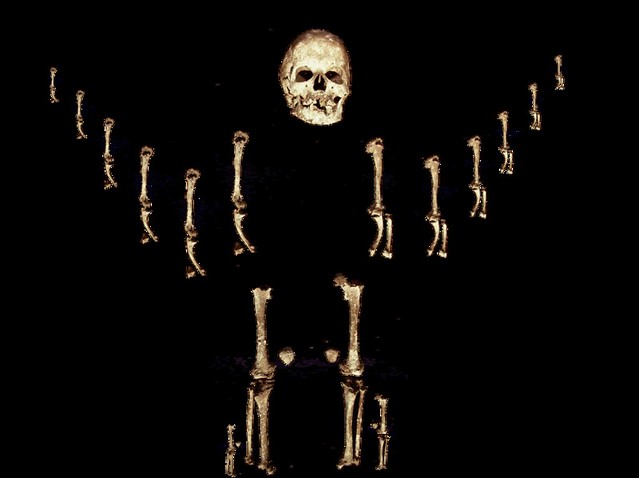Early Heroics
March 17, 2016
During the excavation of a common grave at Romito Cave in Italy, P. Graziosi discovered the diminutive remains of the earliest known case of dwarfism in the human skeletal record. The specimen, known as Romito 2, exhibits features typical of acromesomelic dysplasia, including a high domed skull, compressed cranial base, and extremely shortened diaphyseal lengths. It extends the time span of this genetically determined growth restriction to approximately 10,000 years ago, much earlier than previously known. The fact that this individual reached late adolescence attests to tolerance and compassion of Upper Paleolithic groups for very short individuals. But why should we presume otherwise? It’s well known that in ancient Egypt and The Maya kingdom little people were highly steemed managers and caretakers within the royal household, often holding positions that allowed them to acquire wealth and power.
Shorter than usual people have been part of human biological and cultural history for a very long time. Dwarfism has infused and enriched our culture. It has expanded the reach of our species (figuratively speaking), and it has created the possibility that hopefully one day soon, we’ll be able to embrace the virtues of a smaller human species. For at least 10.000 years and probably longer, these evolutionary heroes paved the way, and continue to do so today.